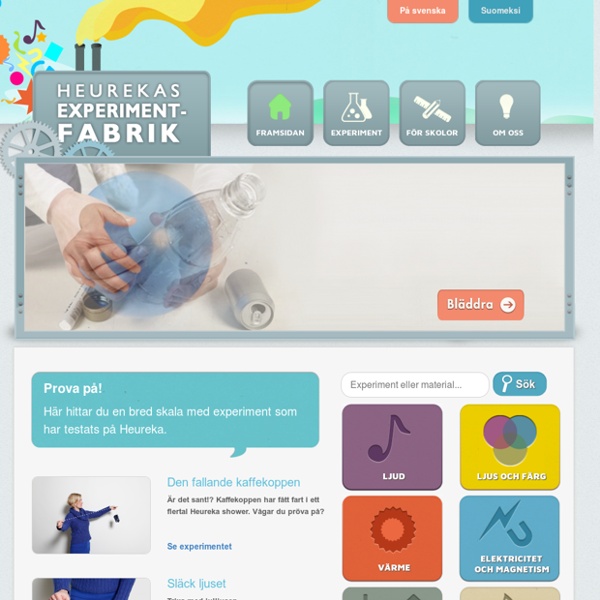



http://tempputehdas.heureka.fi/sv/
Related: ankimartnell • fysik • NO100 Ways To Use Google Drive In The Classroom 100 Ways To Use Google Drive In The Classroom by onlineuniversities.com Students and educators have a wealth of learning and productivity tools available to them online. Google offers some of the highest-quality resources on the web to meet all your study and teaching needs, and all you need to access them is an internet connection.
Online Tone Generator - generate pure tones of any frequency You can damage your hearing or your speakers if you play tones at extreme volumes. People can’t hear sounds < 20 Hz and > 10,000 Hz very well. If you turn up the volume on your device to compensate, you could expose yourself to harmful sound levels and your speakers to harmful currents. KS2 Science Finding out how you move and grow. Can you label the human skeleton? When you've finished move onto the animal skeletons. Do you know which groups living things belong to? 10 ways I use Google Forms in my tablet classroom Image courtesy of TBR Mohamed El-Ashiry takes a look at ways of using Google Forms in the classroom. I am one of Google Forms‘ biggest fans! I have many reasons to love the service, and I use it in many different ways. While there have been many other advantages, the biggest advantage of using Google Forms in my classroom is being able to give students immediate feedback. I often connect my tablet to the projector, and hide the column displaying the names of students submitting their responses (whether they are responding to a test, or self-assessment or peer-assessment, etc.).
Online Tone Generator - Free, Quick, No Sign Up Required. The 60 second online hearing test. It's free, simple and no sign up required. How high can you hear? Science Saturday What first comes to mind when you think of Seattle? Did I hear you say rain? This week’s Science Saturday project is about water and is from Seattle. Anne, a Seattle mother of three, shares her pictorial How to: Self-Watering Seed Starter Pots. Who better to know about water than a Seattlite, right? Google Docs: Mark As Graded - Teacher Tech When assessing student work done in Google Docs it can be a challenge to know which student documents you have looked at and which ones you still need to look over. When looking in my Google Drive folder with student work I need a system for looking at the titles of the files in Google Drive to see what the status is. Karen Hogan (Click Here) came up with a system for modifying the title of the document to append it with “Graded” or another status. I have been playing around with Google Apps Script this week.
Ice Tray Battery - Kids' Science Wrap a nail with a piece of copper wire, leaving a section of wire extending from below the head of the nail. Repeat Step 1 with the remaining 4 nails and 4 pieces of copper wire. Fill 6 wells of an ice tray with distilled white vinegar.
Google Classroom - Grade the Folder - Teacher Tech Something I am very curious about is if kids at the front or the end of the alphabet have an advantage when it comes to digital grading. Let’s be honest, we do not grade the top of stack of papers the same as the bottom. The stack of papers was not in any particular order though. Digital work is pretty much always in alphabetical order. You Know How This Experiment Ends, But You Should Watch It Anyway Kinja is in read-only mode. We are working to restore service. First off, I have to marvel at how incredible this is to watch and admit that it made me too gawk, giggle, and grin like a child. I can't wait to show people this. That said, does anyone else wonder how much it had to cost to spend the 3 hours pumping out the air, setting up, and conducting this experiment that everyone know the result of? (Again, not wanting to rain on anyone's parade cause I'm damn glad they did it.
The New Bloom’s It’s difficult to think about doing creative, authentic projects with students when the school is consumed with test prep fever and the state tests are just a week away. Testing has, indeed, had a tremendous impact on curriculum and instruction in our schools. While tests give us benchmark data on where students are with knowledge and skill development, they often fall short of helping students develop the higher level thinking skills that 21st century students need for a technological workplace.